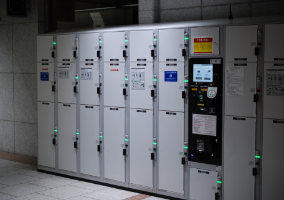Upon Your Arrival: Useful Information for Your Travel in Japan
Upon Your Arrival at the Japanese Airport
When you get off the plane after a long flight, your first task is to go through immigration. After that, you will receive your luggage and go through customs.
General Immigration Control Flow
Go to the immigration control (immigration/passport control), line up in front of the counter, and wait until the immigration inspector calls you. Documents required at the time of examination are a passport and an immigration card.It is safe to check in advance whether an immigration card may be required. In addition, you may need to show documents such as a visa and a flight ticket for the return. So, keep them in a place where you can easily take them out. Immigration cards are basically distributed on the plane, so fill in the form while on board. At the immigration counter, the inspector asks you questions like the following. Try to answer smoothly: Purpose of stay (sightseeing, work, business, study abroad, etc.), length of stay, accommodation (hotel name, etc.)

Luggage Pick-Up, Customs, and Arrival Lobby
Pick up your luggage checked ]at the place of departure. Check the boarding flight and pick-up location on the electronic bulletin board and wait for your luggage to arrive. If you can't find your luggage, ask the airline staff at the site. Pick up your luggage and go through customs. If you bring in food distributed as in-flight meals by plane, you may be asked to confirm it by customs. Once you have passed customs, check all your baggage. And make sure to check the route to your destination before leaving the arrival lobby.
First, check the station closest to your destination. Then check the route from the airport to the nearest station and see which route you should choose from the airport. Public transportation operates on time, so we recommend traveling by train or bus.
It is convenient to put Japanese yen in your wallet before you start moving around. Keep safe money in your bag that you do not use in Japan.
Transportation from the Airport
As soon as you leave the arrival lobby, head to your destination. Trains and highway buses are the main means of transportation at large airports such as Haneda Airport, Narita Airport, Kansai International Airport, New Chitose Airport, and Fukuoka Airport.
1. Trains connecting to major international airports
1. Haneda Airport: Keihin Kyuko, Tokyo Monorail
2. Narita Airport: Narita Sky Access Line, Keisei Main Line, JR Line
3. Kansai International Airport: JR Line, Nankai Line
4. New Chitose Airport: JR Line
5. Fukuoka Airport: Subway

2. Fares from the airport to major cities
New Chitose Airport → Sapporo Station (Limousine bus 1100 yen; train JR 1990 yen)
Niigata Airport → Niigata Station (Limousine bus 420 yen)
Sendai Airport → Sendai Station (Limousine bus 660 yen; train JR 660 yen)
Narita Airport → Tokyo Station (Highway bus 1300 yen; train Narita Express 3270 yen; via Keisei Skyliner 2680 yen)
Narita Airport → Shinjuku Station (Limousine bus 3200 yen; train Narita Express 3250 yen, via Keisei Skyliner 2720 yen)
Haneda Airport → Tokyo Station (Limousine bus 950 yen; train via Keikyu 470 yen, via Tokyo Monorail 660 yen)
Haneda Airport → Shinjuku Station (Limousine bus 1250 yen; train Keikyu/JR 500 yen)
Chubu International Airport → Nagoya Station (Limousine bus 1500 yen; train Meitetsu μ Sky 1250 yen)
Kansai International Airport → Osaka Station (Limousine bus 1600 yen; train JR 1210 yen)
Kansai International Airport → Kyoto Station (Limousine bus 2600 yen; train JR 3630 yen, Nankai/subway/JR 1730 yen)
Hiroshima Airport → Hiroshima Station (Limousine bus 1370 yen)
Oita Airport → Oita Station (Bus 1550 yen)
Fukuoka Airport → Hakata Station (Train Fukuoka Municipal 260 yen)
3. Buy a ticket
Buy your ticket at the ticket machine or at the counter. You will pay cash in most cases. If you travel a lot by public transportation, we recommend purchasing an IC card such as SUICA.
Travel Advice
1. Your smartphone is your personal assistant
If you look for a route to your destination or get lost, it's a good idea to get help from apps like Google Maps.
< Recommended apps >
a. Google Map:Check transportation and routes
It suggests you the map around your destination and directions by public transportation, car, walking, etc. It will also provide you with gourmet and shopping information.
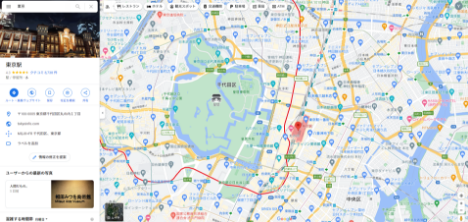
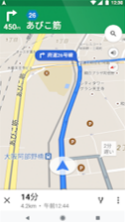
b. Japan Travel by NAVITIME:Check transportation and routes
Search for the route to your destination by public transportation. It also provides the route options when using the Japan Rail Pass.
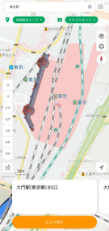
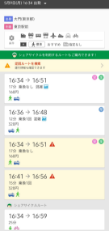
c. Google Translate:Standard translation application
It is a standard translation application that can translate via character input, voice input, handwriting input, and camera image input.
There is also a function to read the document aloud.
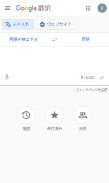
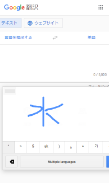
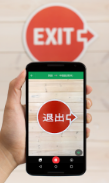
d. Papago:Translation application
It is a multifunctional translation app similar to Google Translate. In addition, a collection of daily conversations for travel is also included.
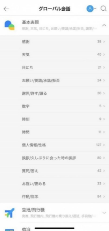

e. DeepL:Translation application
This app is known as a highly accurate machine translation. Only text input and voice recognition are supported.
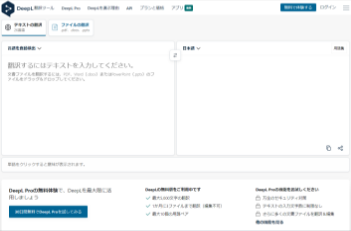
If you feel uneasy about the app, especially in business negotiations, contact the translation / interpretation company in advance.
We, at b-cause, Inc., also support your business. URL: b-cause.co.jp
2. Japan as a Cash Country
There are many tourist spots and shops that do not accept credit cards or e-commerce.
We recommend that you carry cash with you, even if it is a small amount.
Here are four ways to get cash in Japanese Yen.
a. Seven Bank
More than 26,000 Seven Bank ATMs nationwide are installed not only at branches of the convenience store Seven-Eleven but also at stations, airports, and commercial facilities.
ATM operations are displayed in 10 languages with multilingual support. You can withdraw cash in Japanese Yen from ATMs.
b. Bank Exchange Service
Major banks such as Mizuho Bank, Mitsubishi UFJ Bank, and SMBC Trust Bank provide currency exchange services, and they are also available at airport branches.
However, the disadvantage of bank exchange is that the rates are not very good.
URL: Mizuho Bank Exchange Shop / Automatic Foreign Currency Exchange Machine
URL: Bank of Tokyo-Mitsubishi UFJ Foreign Currency Exchange Special Corner
c. Travelex Japan
There are more than 90 stores nationwide, including major airports, train stations, tourist destinations, and commercial facilities. You can also earn airline miles according to the amount of money exchanged.
d. Daikokuya
Store locations are limited to big cities (Tokyo, Osaka, Kyoto, Hiroshima, Fukuoka), but you can exchange at a better rate than at major banks.
3. Carrying Luggage
a. Coin Locker
There are coin lockers at stations and large commercial facilities. Put your large baggage in a locker. Generally, it is about 400 to 700 yen a day.
Some lockers can be stored for multiple days, but many lockers are for one day only. Please read the precautionary statements carefully before depositing.
b. Luggage Storage by Train/Bus
On trains and buses, you may be able to load your luggage in the space above your seat.
c. Additional reservation / payment
Special seat reservations or payments are required to bring large luggage onto the Shinkansen.
If you bring luggage (oversized luggage) with a total length of three sides of between 160 cm and 250 cm into the car, you need to reserve a special seat with an oversized luggage space in advance.
If you don't make an advance reservation, you may need to pay an extra fee of 1,000 yen.
If you bring in pets, you will need to pay the personal belongings fee (290 yen per piece) even on ordinary trains other than the Shinkansen.For further details, check the websites operated by each JR company:
Reference URL:
"Personal Belongings" JR Central
https://global.jr-central.co.jp/en/tickets/type/belongings.html
"Reservations for Seats with an Oversized Baggage Area" JR Central
